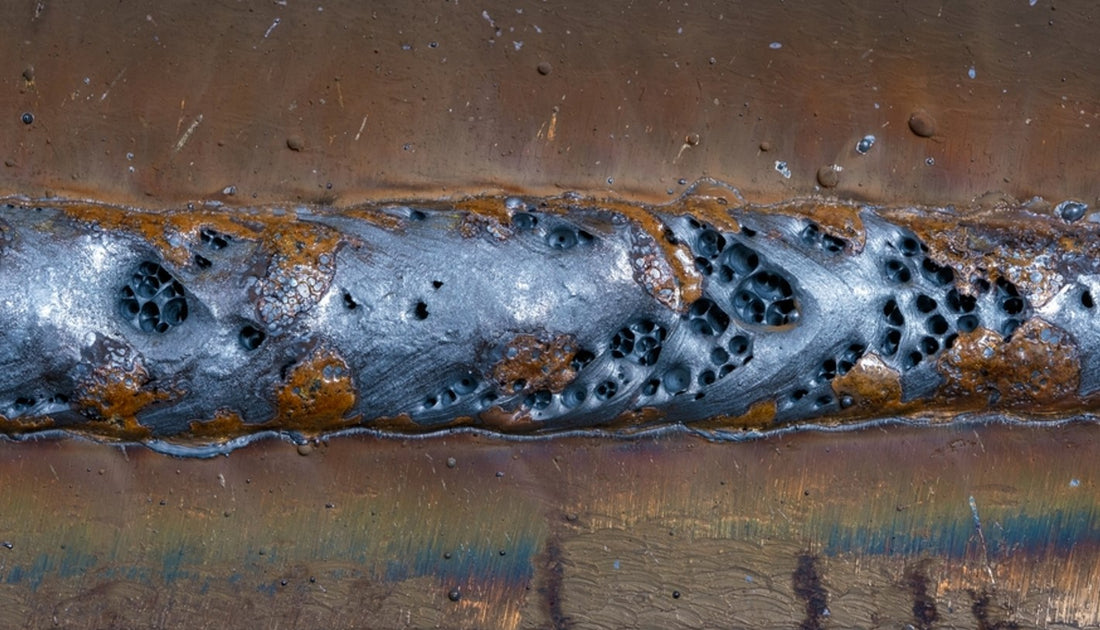What is Porosity in Welding: Typical Sources and Effective Remedies
What is Porosity in Welding: Typical Sources and Effective Remedies
Blog Article
The Science Behind Porosity: A Comprehensive Guide for Welders and Fabricators
Recognizing the elaborate systems behind porosity in welding is crucial for welders and producers making every effort for remarkable workmanship. From the composition of the base products to the intricacies of the welding process itself, a wide range of variables conspire to either worsen or relieve the existence of porosity.
Recognizing Porosity in Welding
FIRST SENTENCE:
Exam of porosity in welding reveals essential insights into the stability and high quality of the weld joint. Porosity, defined by the visibility of dental caries or spaces within the weld metal, is a common concern in welding processes. These voids, if not effectively resolved, can jeopardize the structural stability and mechanical properties of the weld, resulting in possible failings in the completed item.

To identify and evaluate porosity, non-destructive testing techniques such as ultrasonic testing or X-ray examination are typically used. These methods allow for the identification of internal problems without compromising the integrity of the weld. By evaluating the dimension, form, and circulation of porosity within a weld, welders can make educated decisions to improve their welding procedures and achieve sounder weld joints.

Elements Affecting Porosity Development
The occurrence of porosity in welding is influenced by a myriad of variables, varying from gas shielding performance to the details of welding specification settings. One critical factor adding to porosity development is inadequate gas securing. When the protecting gas, generally argon or CO2, is not properly covering the weld pool, climatic gases like oxygen and nitrogen can contaminate the molten steel, leading to porosity. In addition, the tidiness of the base materials plays a considerable role. Pollutants such as rust, oil, or dampness can vaporize throughout welding, producing gas pockets within the weld. Welding parameters, consisting of voltage, present, travel speed, and electrode kind, additionally effect porosity formation. Utilizing incorrect setups can produce excessive spatter or warm input, which in turn can lead to porosity. Additionally, the welding strategy utilized, such as gas steel arc welding (GMAW) or secured steel arc welding (SMAW), can influence porosity formation because of variations in warmth distribution and gas protection. Understanding and managing these variables are necessary for reducing porosity in welding procedures.
Effects of Porosity on Weld High Quality
Porosity development dramatically jeopardizes the architectural honesty and mechanical properties of welded joints. When porosity exists in a weld, it produces spaces or dental caries within the product, lowering the total stamina of the joint. These voids work as stress focus factors, making the weld more susceptible to breaking and failure under load. The existence of porosity likewise compromises the weld's resistance to rust, as the caught air or gases within deep spaces can react with the surrounding setting, leading to degradation with time. In addition, porosity can impede the weld's capability to withstand stress or influence, additional threatening the total high quality and reliability of the bonded framework. In crucial applications such as aerospace, auto, or structural building and constructions, where safety and security and longevity are extremely important, the detrimental results of porosity on weld top quality can browse this site have extreme repercussions, stressing the value of reducing porosity via correct welding methods and treatments.
Techniques to Lessen Porosity
To enhance the top quality of welded joints and make certain structural honesty, welders and producers use particular methods aimed at lowering the formation of gaps and cavities within the product throughout the welding procedure. One reliable method to minimize porosity is to make sure correct material preparation. This consists of thorough cleansing of the base metal to eliminate any kind of impurities such as oil, grease, or wetness that can add to porosity development. Additionally, utilizing the suitable welding criteria, such as the proper voltage, current, and travel speed, is crucial in stopping porosity. Keeping a consistent arc size and angle during welding additionally helps in reducing the chance of porosity.

Making use of the proper welding method, such as back-stepping or using a weaving movement, can additionally assist distribute warmth uniformly and decrease the possibilities of porosity development. By applying these strategies, welders can effectively reduce porosity and generate premium welded joints.

Advanced Solutions for Porosity Control
Carrying out innovative innovations and innovative approaches plays a critical duty in achieving premium control over porosity in welding processes. One advanced remedy is making use of sophisticated gas combinations. Protecting gases like helium or a mixture of argon and hydrogen can help in reducing porosity by offering better arc security and enhanced gas coverage. Additionally, using advanced welding methods such as pulsed MIG welding or changed atmosphere welding can likewise aid reduce porosity concerns.
An additional innovative service entails using sophisticated welding tools. Making use of equipment with built-in functions like waveform control and sophisticated power resources can enhance basics weld quality and reduce porosity risks. The execution of automated welding systems with specific control over criteria can considerably reduce porosity problems.
Additionally, incorporating advanced monitoring and evaluation innovations such as real-time X-ray imaging or automated ultrasonic testing can assist in detecting porosity early in the welding procedure, enabling instant restorative actions. Overall, incorporating these sophisticated options can considerably enhance porosity control and boost the general quality of bonded components.
Conclusion
Finally, comprehending the scientific research behind porosity in welding is crucial for welders and producers to produce high-grade welds. By determining the aspects affecting porosity development and carrying out methods to lessen it, welders can improve the total weld high quality. Advanced options for porosity control can additionally enhance the welding procedure and guarantee a strong and this hyperlink dependable weld. It is essential for welders to continuously enlighten themselves on porosity and implement finest practices to achieve optimum results.
Report this page